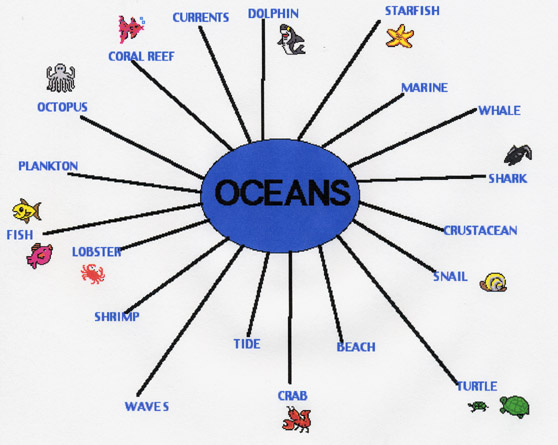
LESSON 1
AIM: What is the Ocean Biome?
MOTIVATION: Show video "Ocean" by Eyewitness Video as an introduction to the ocean biome.
Video: "Ocean" by Eyewitness Video DK Publishing, Inc. N.Y. http://dk.com
Ocean visits the alien world of the deep- a habitat that contains 99% of the living space on the planet. Running time 35 minutes, suitable for all ages.
Brainstorm ocean and create an idea web (semantic
map).
|
|
Have children describe any ocean experience they have had.
MATERIALS: Video "Ocean" by Eyewitness Videos, Internet access, word processing programs such as Microsoft Word or Apple Works, database sheet, and printer.
PROCEDURE:
1. Define the ocean biome (large area on Earth that shares similar physical characteristics) as the largest biome on earth and have children describe its characteristics.
2. Introduce vocabulary related to the ocean: ocean, marine life, coral reef, shoreline, plankton, algae, ocean climate, currents, tides, marine, mollusks, crustaceans, sea mammals, and sand. Children can use http://m-w.com/ (Merriam-Webster online) to find the definitions for these words.
3. Have children use the Internet and online encyclopedias to research the ocean biome using the vocabulary as keywords. The following site gives basic information on an elementary level:http:www.richmond.edu/~ed344/webunits/biomes/oceans.html
4. Create a database from the vocabulary words, using pictures from the Internet as illustrations. Children will fill in database from their online research.
The
following pictures were taken from the University of Richmond's website,
listed above.
ACTIVITIES:
Children fill in the database from their online research.
FOLLOW-UP: This lesson will lead into the next lesson "What is sand?"